shishkaboy
>>>>Beanie Man<<<<
Most cannabis cooking is done with cannabutter. So a good cannabutter recipe can go a long way.
Completely melt the butter down in a medium sauce pan to let the butter and the dairy solids separate in the pan. Use a spoon to scoop off the layer of solids that floats to the top. Next, slowly pour off the melted butter into a separate bowl, leaving the white cloudy liquid in the bottom of the saucepan. Finally, use a spoon to get the rest of the clarified butter from the sauce pan.
Why?
The dairy solids in butter are really good at absorbing quite a bit of your thc. Without it we will know that all the thc will be in the butter itself. From a culinary perspective, I would always use clarified butter.
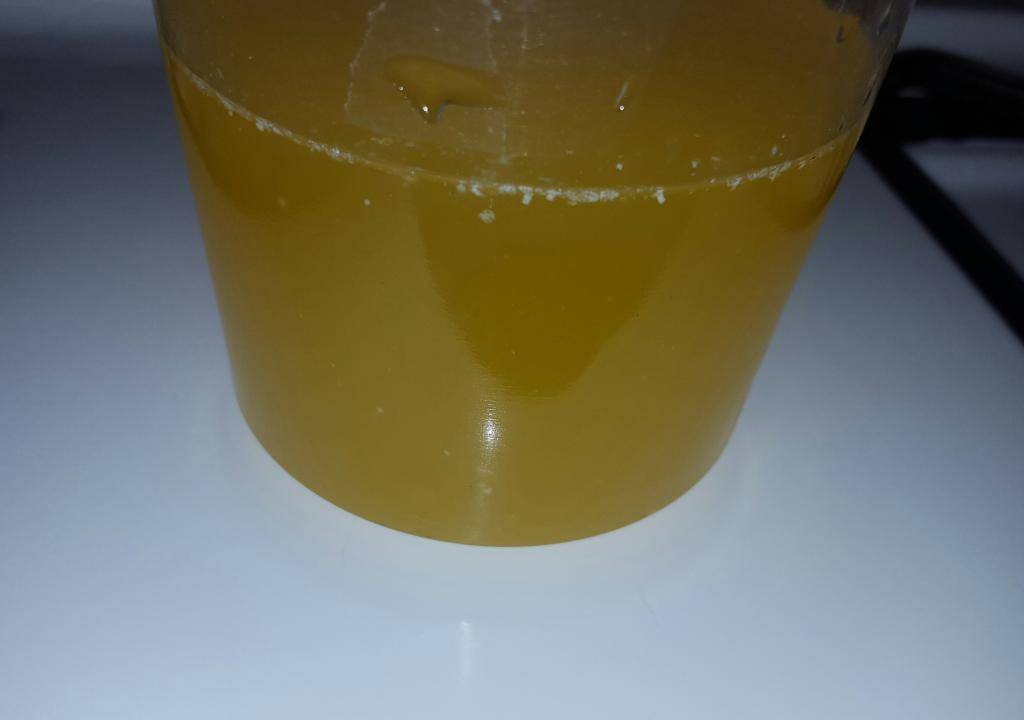
Add the cannabis and clarified butter to a large sauce pan, cover with water. Bring to a boil and cook on low heat for 90 min, stirring every 15 min. Add more water as needed.
Covering the mixture with water ensures that I will not burn my butter. The boiling point of water is lower than the smoke point of the butter, so as long as the water doesn't completely boil away I have a buffer. Adding water also helps get the chlorophyll and water solubles out of the finished product.
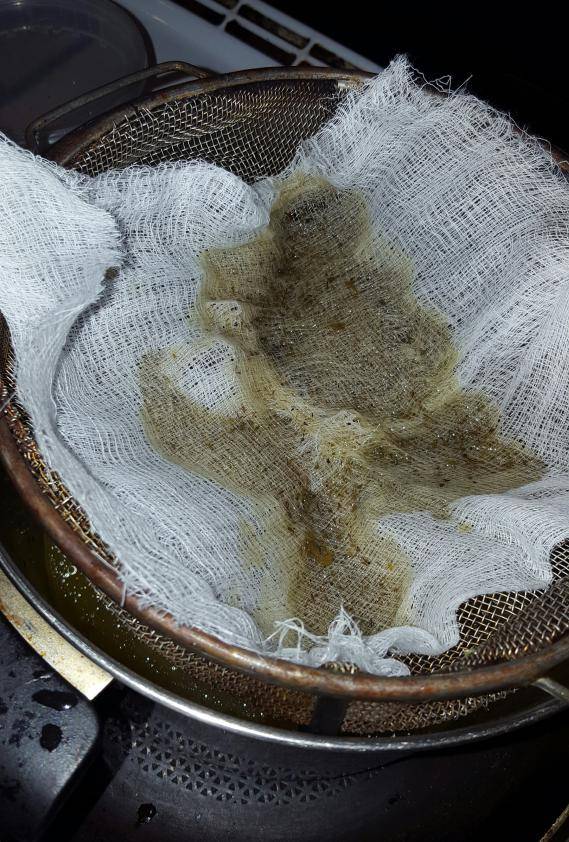
Strain out the plant matter, refrigerate the water/butter. Pour off the water, remelt add water and repeat until water is clear.
Make sure to squeeze all the liquid out into a bowl. Set it in the refrigerator for 1 hour to harden. After about an hour you will be left with a thick green butter sitting on top of dark green or brown water. Poke a hole in the butter and pour off all the nasty water. This water will ruin your baked goods. Remelt the butter and add a few cups of cold water (helps cool it down again). Set it back in the refrigerator, poke a hole, pour off the nasty.
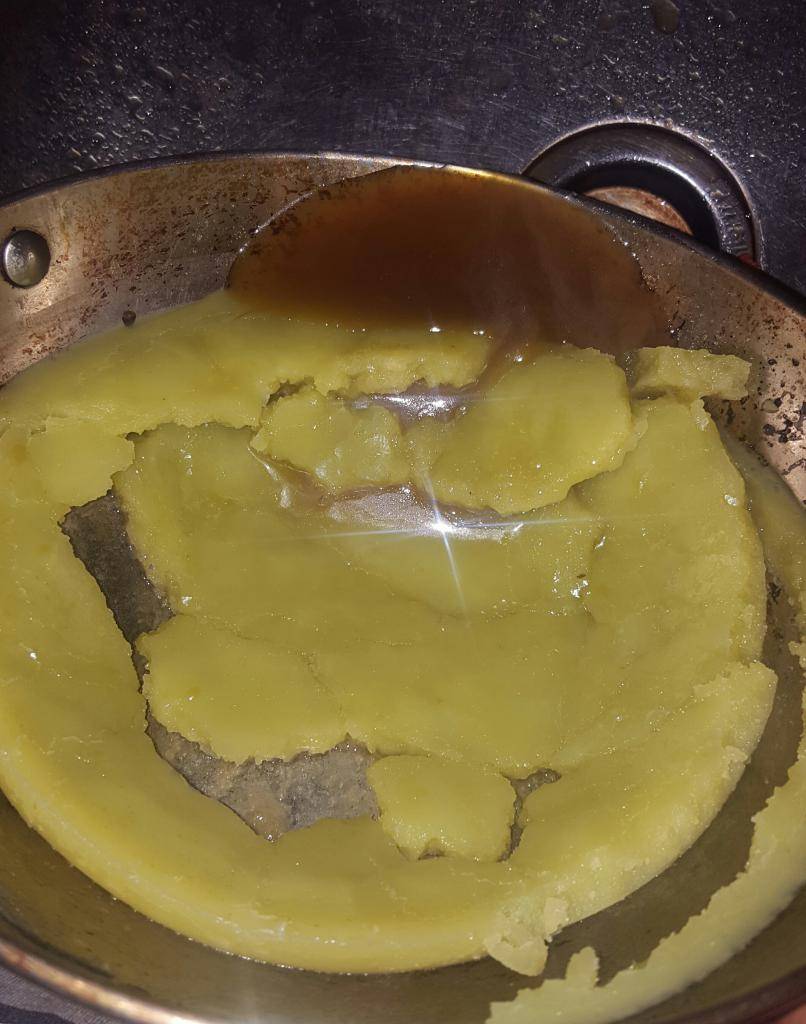
Cook your butter over very low heat keeping an eye on the temperature. We want it at around 239 for 15 min. You may need to raise the heat to get it up to 239, but turn it back down quickly. If it ever starts to get too hot just pull the pan off the flame for a few seconds.
When we extract like this the thc is not activated yet. We need to bring it up to at least 232 for the molecules to move fast enough that it converts thca into thc.
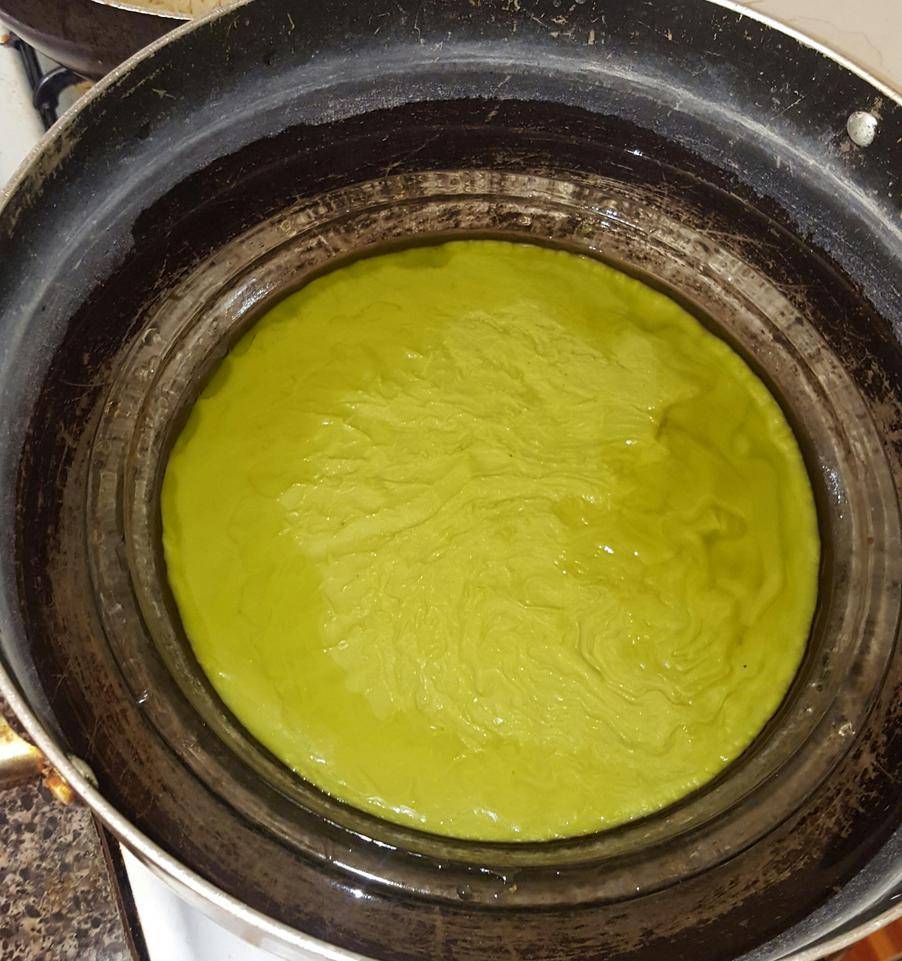
Coconut oil works the same way, with out the milk solids.
Ingredients
1 oz of high quality trim (or 2 oz of fan leaves)
1 lb plus 3 sticks of unsalted butter
thermometer
cheesecloth
strainer
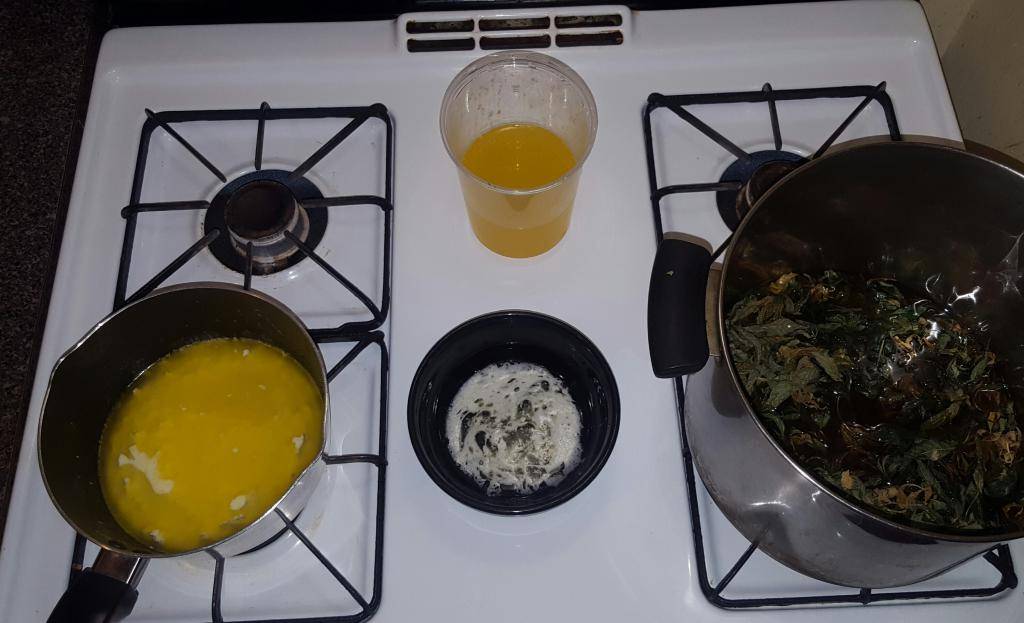
Step 1. Clarify the butter.
1 oz of high quality trim (or 2 oz of fan leaves)
1 lb plus 3 sticks of unsalted butter
thermometer
cheesecloth
strainer
Step 1. Clarify the butter.
Completely melt the butter down in a medium sauce pan to let the butter and the dairy solids separate in the pan. Use a spoon to scoop off the layer of solids that floats to the top. Next, slowly pour off the melted butter into a separate bowl, leaving the white cloudy liquid in the bottom of the saucepan. Finally, use a spoon to get the rest of the clarified butter from the sauce pan.
Why?
The dairy solids in butter are really good at absorbing quite a bit of your thc. Without it we will know that all the thc will be in the butter itself. From a culinary perspective, I would always use clarified butter.
Step 2. Extract the THCA.
Add the cannabis and clarified butter to a large sauce pan, cover with water. Bring to a boil and cook on low heat for 90 min, stirring every 15 min. Add more water as needed.
Covering the mixture with water ensures that I will not burn my butter. The boiling point of water is lower than the smoke point of the butter, so as long as the water doesn't completely boil away I have a buffer. Adding water also helps get the chlorophyll and water solubles out of the finished product.
Step 3. Cleaning your cannabutter.
Strain out the plant matter, refrigerate the water/butter. Pour off the water, remelt add water and repeat until water is clear.
Make sure to squeeze all the liquid out into a bowl. Set it in the refrigerator for 1 hour to harden. After about an hour you will be left with a thick green butter sitting on top of dark green or brown water. Poke a hole in the butter and pour off all the nasty water. This water will ruin your baked goods. Remelt the butter and add a few cups of cold water (helps cool it down again). Set it back in the refrigerator, poke a hole, pour off the nasty.
Step 4. Decarboxylation.
Cook your butter over very low heat keeping an eye on the temperature. We want it at around 239 for 15 min. You may need to raise the heat to get it up to 239, but turn it back down quickly. If it ever starts to get too hot just pull the pan off the flame for a few seconds.
When we extract like this the thc is not activated yet. We need to bring it up to at least 232 for the molecules to move fast enough that it converts thca into thc.
Coconut oil works the same way, with out the milk solids.



 Happy Holidays
Happy Holidays

